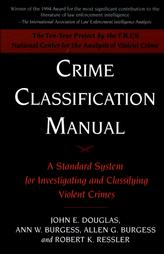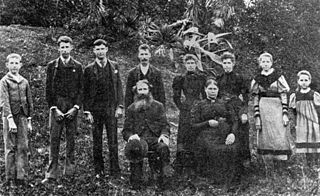A signature crime is a crime which exhibits characteristics idiosyncratic to specific criminals, known as signature aspects, signature behaviours or signature characteristics. Where a modus operandi (MO) concerns the practical components of a crime which can also be unique to one suspect, signature aspects fulfill a psychological need and, unlike the MO, do not often change.

In ordinary language, a crime is an unlawful act punishable by a state or other authority. The term "crime" does not, in modern criminal law, have any simple and universally accepted definition, though statutory definitions have been provided for certain purposes. The most popular view is that crime is a category created by law; in other words, something is a crime if declared as such by the relevant and applicable law. One proposed definition is that a crime or offence is an act harmful not only to some individual but also to a community, society or the state. Such acts are forbidden and punishable by law.
A modus operandi is someone's habits of working, particularly in the context of business or criminal investigations, but also more generally. It is a Latin phrase, approximately translated as modeof operating.
Two examples cited in Crime Classification Manual by John Douglas are a bank robber from Michigan who required tellers to undress during the robbery so he could photograph them, and a rape case where the perpetrator forced the husband to return home and be humiliated by the event. These characteristics move beyond modus operandi, because they fulfill a psychological need rather than a need of practical execution of the crime. [1]

Crime Classification Manual: A Standard System for Investigating and Classifying Violent Crimes (1992) is a text on the classification of violent crimes by John E. Douglas, Ann W. Burgess, Allen G. Burgess and Robert K. Ressler. The publication is a result of a project by the Federal Bureau of Investigation's National Center for the Analysis of Violent Crime.

Michigan is a state in the Great Lakes and Midwestern regions of the United States. The state's name, Michigan, originates from the Ojibwe word mishigamaa, meaning "large water" or "large lake". With a population of about 10 million, Michigan is the tenth most populous of the 50 United States, with the 11th most extensive total area, and is the largest state by total area east of the Mississippi River. Its capital is Lansing, and its largest city is Detroit. Metro Detroit is among the nation's most populous and largest metropolitan economies.

Rape is a type of sexual assault usually involving sexual intercourse or other forms of sexual penetration carried out against a person without that person's consent. The act may be carried out by physical force, coercion, abuse of authority, or against a person who is incapable of giving valid consent, such as one who is unconscious, incapacitated, has an intellectual disability or is below the legal age of consent. The term rape is sometimes used interchangeably with the term sexual assault.
The 1898 Gatton murders also exhibited signature aspects. Following the murders, the bodies were re-arranged so their legs crossed over their bodies with the feet pointing west. [2] Ted Bundy also used a complex series of signature behaviours. [3]

The Gatton Murders, also known as the Gatton Tragedy, the Gatton Mystery and the Murphy Murders, is the name given to an unsolved triple homicide that occurred 1.5 miles (2.4 km) from the town of Gatton, Queensland, Australia. Michael Murphy, aged 29, and his younger sisters, Norah (Honora), 27, and Theresa 'Ellen', 18, were killed between 10pm and 4am on 26–27 December 1898, while returning home from a proposed dance that had been cancelled. Michael had been shot and bludgeoned, Norah strangled and bludgeoned, and Theresa 'Ellen' bludgeoned twice.

Theodore Robert Bundy was an American serial killer, kidnapper, rapist, burglar, and necrophile who assaulted and murdered numerous young women and girls during the 1970s and possibly earlier. After more than a decade of denials, he confessed to 30 homicides that he committed in seven states between 1974 and 1978. The true number of victims is unknown and possibly higher.



